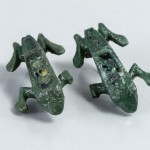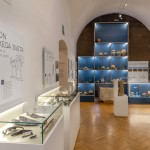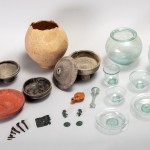On the edge of the Roman Empire
With the Roman conquest of the Pannonian territory in the 1st century AD, the Prekmurje region became part of the newly formed province of Pannonia and later, with its division, part of Lower Pannonia. Administratively, it is said to have belonged to the area of the city of Savaria, to which it was connected by a main Roman thoroughfare that ran along the lower Dolinsko area past Lendava.
In the 1st and 2nd centuries AD, the indigenous Celtic population (Serethi) lived in simple, unprotected settlements. They relied on agriculture, livestock farming and craft activities such as blacksmithing, construction, carpentry, pottery and trade.
The deceased were burnt and buried under mounds with grave goods (the so-called Noricum-Pannonian mounds), in simple burial pits or in walled tombs and columbaria near their dwellings. Of the many mounds, only the perimeter ditches surrounding the burial plots have survived. Wealthy immigrants erected stone tombstones (e.g. tombstone of Viben and Viator).
The economic and cultural boom was reflected in ceramics brought from elsewhere (tera sigilata), jewellery, oil lamps, glassware and coins. Rich newcomers introduced market farming by building rural estates or villae rusticae.
In the 3rd and 4th centuries, internal political instability and increasing barbarian invasions led to the collapse of the Roman state. At the end of the 6th century, the Slavs came to our lands.
Photo in the banner advert: Two frog-figured fibulas from a Roman grave at Nova Tablala II near Murska Sobota (first half of the 2nd century AD) (photo: Tomislav Vrečič)





